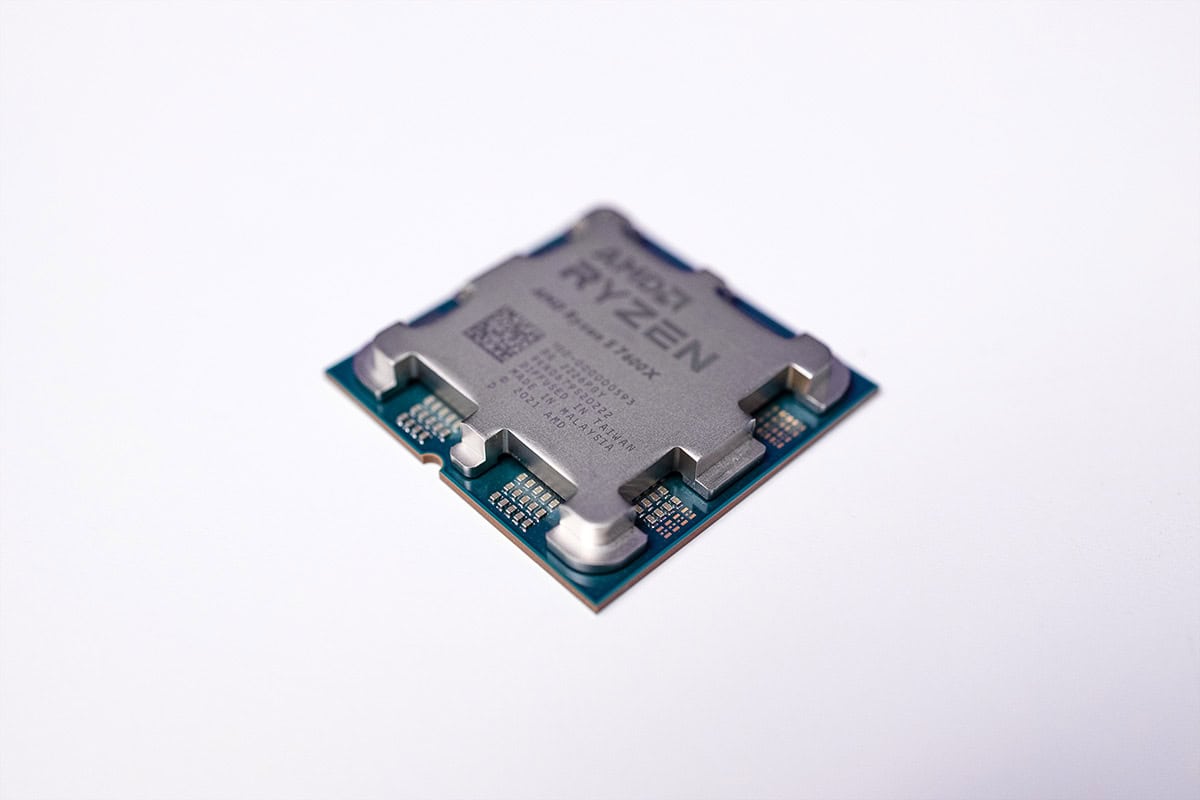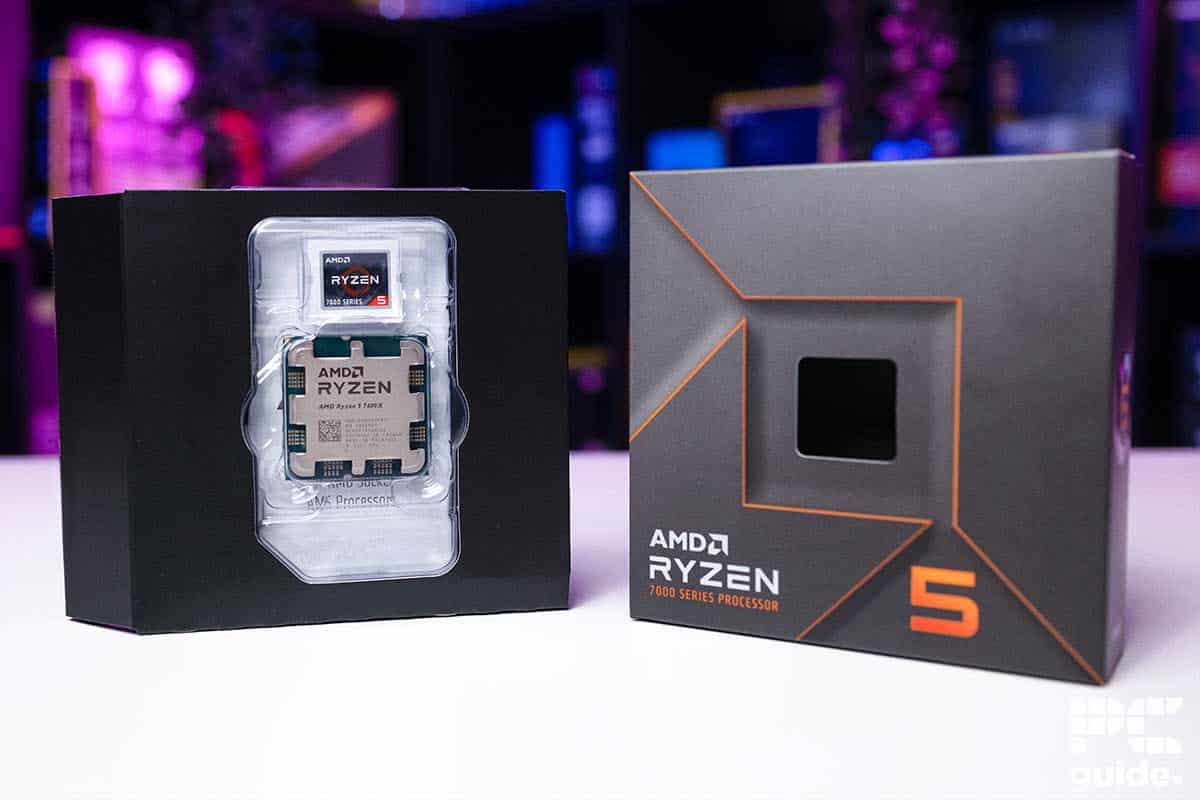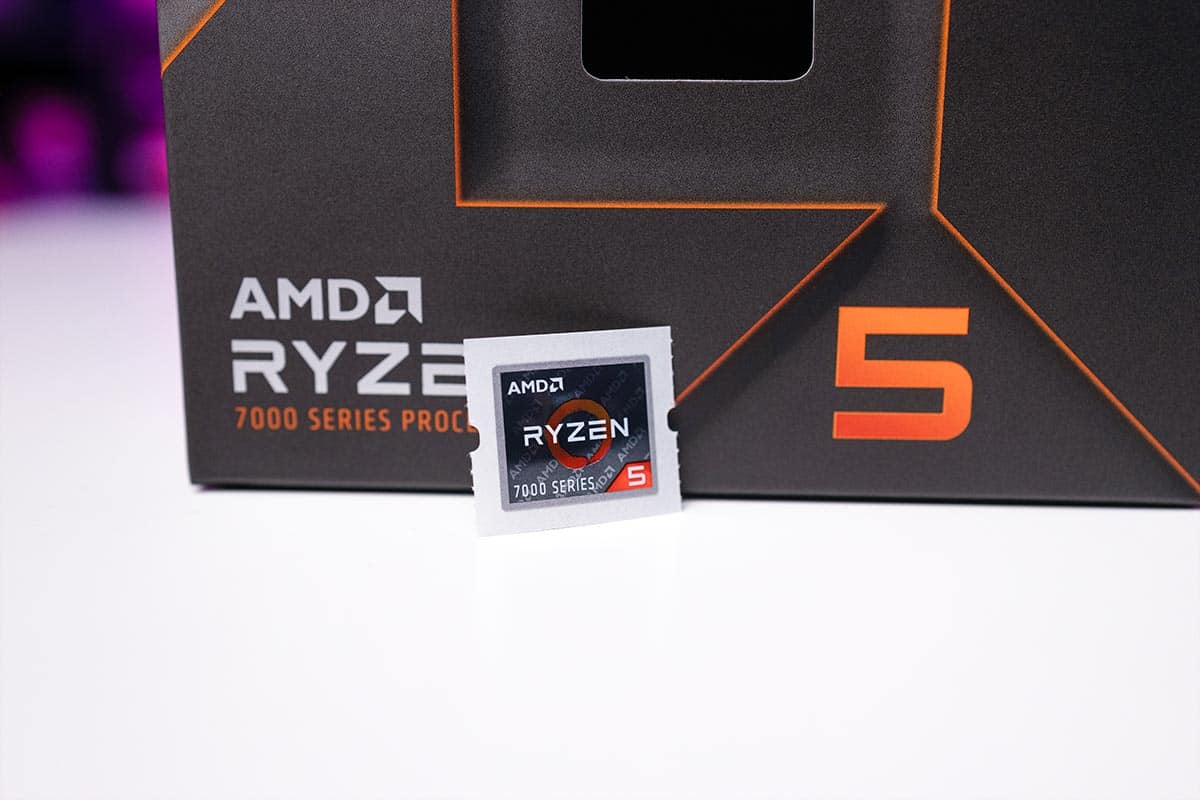AMD Ryzen 5 7600X review – is the 7600X worth it?
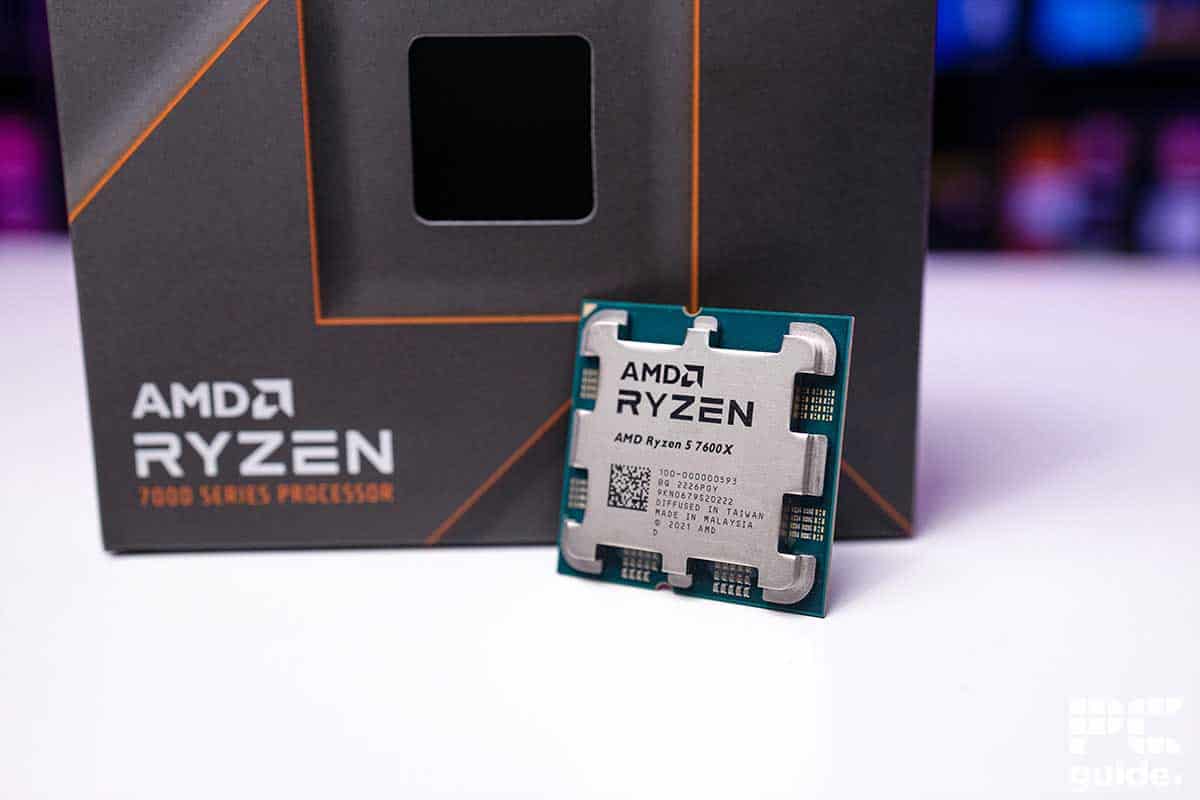
Table of Contents
The Ryzen 5 7600X is AMD’s answer to the question “I need a good CPU but I don’t have a huge budget, which one do I get?”. This CPU was engineered to bring performance and affordability to anyone on the AM5 platform. The 7600X was released in September 2022 as part of AMD’s initial AM5 lineup, which is good for us as it helps to bring more value as time rolls on. So let’s get into our Ryzen 5 7600X review.

- Cores: 6
- Threads : 12
- Boost clock speed: 5.3 GHz
- Base clock speed: 4.7 GHz
- L3 Cache: 32 MB
- TDP: 105W
- Platform: AMD Socket AM5
The Ryzen 5 7600X brings big value for a small price – it performs well in gaming workloads and can hold it’s own in more productive tasks, it seems 6 cores go a long way these days.
- Offers higher performance for a low power cost
- Really affordable, especially since it’s been out a few years
- Easier to keep cool because of it’s lower TDP
- Fewer cores mean it’s not as good as it could be for heavy workstation tasks
- Would maybe wait for the 2nd gen of AM5 to drop to make the price fall further
- AM5 is an expensive upgrade
Why we gave it a 4.5
The Ryzen 5 7600X is a powerful CPU and offers a fantastic price-to-performance ratio. The CPU is more than capable of gaming at the high end, with enough oomph to keep up with the latest GPUs. But it can also supply the necessary computing power for moderate workstation tasks when needed. Although AM5 is expensive, this CPU on its own can be frequently found on sale, taking a little pressure off the wallet.
There’s a lot to discuss around this CPU, there are the IPC improvements, the IHS design, and the core architecture to speak of. To cut a longer review short; if you’re looking for a well-rounded entry-level CPU that behaves and performs more like a mid-range CPU, then we have the chip for you. Its performance in games is astonishing, not to some of the more intense productivity benchmarks. If you need more convincing, please read on.
CPU Specifications
First of all, we need to outline the specifications of the 7600X to find out what makes it so special. Here are the full specifications of the CPU in question:
- Cores: 6
- Threads: 12
- Base clock speed: 4.7GHz
- Boost clock speed: 5.3GHz
- L2 Cache: 6MB
- L3 Cache: 32MB
- TDP: 105W
- Socket: AM5
- iGPU: RDNA 2 based Radeon Graphics
On paper, the 7600X looks pretty ordinary, and you might be tricked into thinking that if you don’t know what’s going on under the IHS – so to speak. Thanks to the smaller 5nm process, AMD can pack more transistors into each core, increasing a metric known as IPC (instructions per core). IPC essentially means “This is how many instructions I can process per clock cycle”.
The more Transistors, the better
The more transistors that you can pack into any given space gives the CPU a higher IPC, that means that the CPU can process more information per clock. A clock just refers to how many cycles the CPU can do in a second, and the IPC refers to how many instructions can be processed per cycle.
There’s a reason AMD pays a lot of smart people big money to figure this stuff out.
The IPC increased up to 10% in the Ryzen 7000 series over the previous generation, leading to an overall performance uplift of about 35% across the board. Couple that with the 25% bandwidth increase the CPU gets from using DDR5 memory, and you’re on for a real winner. Finally, sprinkle in double the L3 cache per core, and you have the workings of a 7000 series CPU.
The reason this matters so much is that you can’t see all that information when looking at a spec sheet, speaking of information, we’re itching to tell you how the 7600X did in our new and improved PCGuide benchmark suite.
Performance
We measured the performance of the Ryzen 5 7600X in a whole new way; we have a suite set up to showcase the potential of a CPU for not just gaming, but productivity and workflow tasks too. Here is the rig on which all of this testing took place:

| Component | Name |
|---|---|
| GPU | RTX 4070 Ti Super |
| Memory | Corsair Vengeance DDR5 @ 6400MHz |
| Motherboard | ASUS ROG Corsshare Extreme X670 |
| CPU cooler | Corsair Elite LCD Capellix 360MM |
| Power supply | ASUS ROG Thor 1000W |
| Case | Cooler Master Masterframe |
We always use the same components (or as similar as possible when comparing CPUs of different brands) to ensure the testing is as fair as possible. Now, allow us to showcase the synthetic performance of the Ryzen 5 7600X.
Synthetic CPU performance
We ran the 7600X through several synthetic tests, including benchmarks from CPUZ, Geekbench, Cinebench, 7-zip, Blender, Puget Systems, and Handbrake. The reason we have chosen to perform these tests is to give a baseline idea of what you can expect from a CPU such as this. All of the benchmarking applications are popular and easy to compare results with other CPUs.
| Benchmark | Score |
|---|---|
| CPU Z Single | 766 points |
| CPU Z Multi | 6,192 points |
| Cinebench R23 Single | 1,923 points |
| Cinebench R23 Multi | 13,729 points |
| Geekbench Single | 2,955 points |
| Geekbench Multi | 13,236 points |
| Puget Systems photoshop | 8,131 points |
| Blender render | Monster 87.03 SPM Junkshop 62.23 SPM Classroom 45.64 SPM |
| 7 Zip Compression 32MB (10 passes) | 45.531s |
| Handbrake TOS 4K Fast 1080P encode | Average Speed 61.49 FPS Encode Time 4:49 |
As you can see, we have put the Ryzen 7000 series CPU through the wringer, including all new benchmarks for workstation applications.
CPUz
CPU-Z benchmarks indicate that the 7600X brings fantastic single-core performance, for comparison, the 7900X only scores 778 in the single-core testing, and that has a core speed 0.3GHz higher than the 7600X. The scores achieved in CPU-Z can be viewed here, so you can make a comparison to any CPU you like, to gain an understanding of that CPU’s performance.
Cinebench
Cinebench is everyone’s favorite table and chair simulator. It also happens to be my favorite benchmarking tool because I like watching the scene come together. The 7600X managed 1,923 points on the single-core benchmark, and 13,729 on the multi-core. The Cinebench scores can be viewed here, and going off these scores, the 7600X manages to beat the 5600X by over 3,000 points. Bear in mind, that these are the best scores posted with each CPU and are not necessarily the indication of standard performance.
Geekbench
Geekbench is another display of great performance from this budget beast. Our Ryzen CPU scored 2,955 points in the single core, and 13,236 points in the multi. This is somewhat comparable to the 14700K which we recently tested, which only scored 3,092 points in the single core. Not much of an uplift when you consider the cost. However, the 14700K dominated in multi-core performance with a score of over 21,000.
Puget Systems Photoshop

Our Puget Systems Photoshop benchmark is new to our suite, but possibly one of the most important for determining CPU productivity when it comes to photo editing. The test scores your CPUs ability to import RAW files, test filter applications, masking, lens correction, and so much more – it also does this 3 times over. The full details can be found here. Puget scored the 7600X 8,131 points, putting it about on par with an i5-13600K. Which is pretty impressive.
This one would take a while to explain
If you’re into photo editing, then it’s highly recommended you take a look at the Puget Systems benchmark and look through the laundry list of things that this benchmark tests. We could write a full article on this benchmark alone.
Blender

Blender is a 3D modeling software that has allowed users to create some pretty realistic and elaborate scenes over the years. So it seems like a perfect opportunity to test our CPU. Thankfully, Blender has a benchmarking component, in which it uses three scenes to test how many Samples per minute a CPU can process (the higher the better). The Zen 4 cores perform very well in this area, and performance is similar between the 7600X and the 7900X.
In Monster, for example, the 7600X scored 87.03 SPM, whereas the 7900X scored 184.52 SPM which looks massive because it’s just over double, but you have to remember that the 7900X has double the cores and a slightly higher clock speed. So it seems all AM4 cores are capable of working at similar speeds across the board when fully loaded.
7-Zip

7-Zip is a file compressor, similar to Winrar, but with a neat little benchmarking feature. This feature runs 10 passes of compression and decompression to and times the results. We had the default 32MB packet and it only took the 7600X 45.5 seconds to complete the entire run. Faster than the 7900X could do it, which was around 4 seconds slower.
Handbrake Tears of Steel
Finally, we have the Handbrake benchmark to test video encoding capabilities. We have a Video file that is 4K and over 6GB in size, the test measures how long it takes the 7600X to encode the file into 1080P format using the Fast 1080p encode settings. Not surprisingly, the 7600X makes light work of the encode, taking only 4:49, with an average encode speed of 61.49 FPS.
Real Word benchmarks
Real-world benchmarks test the CPUs ability to deal with real workloads, the best (and most fun) way to test this is with games. While we do try to manage the GPU limitations as much as we can, it’s important to know that most of the heavy lifting when gaming comes from the GPU, and your results will vary based on what GPU you have.
We tested just 2 games, Days Gone and Cyberpunk 2077 to get an understanding of how well the 7600X can handle somewhat difficult-to-run games.
| Game | Result |
| Days Gone | 236 FPS / 1% 62 FPS |
| Cyberpunk 2077 | 295 FPS / 1% 149 FPS |
As you can see, our Ryzen 7000 series CPU is more than capable of smooth 1080p gameplay. The reason we have the resolution set to 1080P is so we can manage how limited we are by the GPU.
Days Gone
Days Gone can be a little temperamental to run at times, but not when you’re armed with the Ryzen 5 7600X. The CPU manages a 236 FPS average with 1% lows of 62 FPS, not bad when even the stutters are hitting the low 60s. The gameplay was smooth and the CPU never reached more than 62°C.
Cyberpunk 2077
CP 2077 was one of the hardest games in the world to run back in the day and is still used as a benchmarking stable today because of it. Our AMD CPU managed to bring home a 295 FPS average and a 1% low of 149 FPS, which is incredibly impressive and not something you’d expect from the once-hardest game to run. Although the performance of Cyberpunk has improved overall thanks to patches, it’s still a testament to how powerful our entry-level CPUs are now.
What do these results mean?

We run synthetic benchmarks to determine how good the 7600X will be in workstation tasks. And thanks to the addition of new benchmarks tailored to productivity, we now have a clear view of how well the CPU does in these scenarios. The 7600X is a powerful CPU, on par with the 13600K in terms of single-core performance – truth be told, the single-core performance isn’t even that far off the 7900X. These benchmarks indicate that our AMD CPU does very well in workstation tasks despite it only being entry-level.
In gaming, the 7600X is more than enough to support the RTX 4070 Ti super in real-world scenarios. Thanks to the AM5 platform, we have an increased PCIe Gen 5 bandwidth to work with as the main source of future-proofing, and increased storage speed thanks to Gen 5 storage compatibility. You can speed up your system in more than one way with the Ryzen 5 7600X.
Price
Now to the bit that nobody likes doing no matter how much money you have: paying for the thing. As of the day this article was written, you can expect to find the 7600X for around $220. Which isn’t too bad considering it retailed for $299, an already incredibly affordable price. You can find an even better deal if you’re willing to shop second-hand, of course.
Be on the lookout for a discount
AM5 CPUs aren’t as fragile as those PGA AM4 CPUs. We’re far more confident in their longevity as a second hand product, so be on the lookout for second hand CPUs to make your money go as far as possible.
There is one more thing you have to consider. The 7600X belongs to the AM5 socket, and it’s the first generation of CPUs to belong to that socket. That means you aren’t going to have one of these motherboards already. This is going to be a case of getting a new CPU, motherboard, and memory, as AM5 does not support DDR4. So the upgrade to AM5, as a prerequisite to using your new AM5 CPU, may be far more costly than a simple upgrade to a CPU on the socket you already have.
Alternatives to the Ryzen 5 7600X

Intel Core i5-13600K
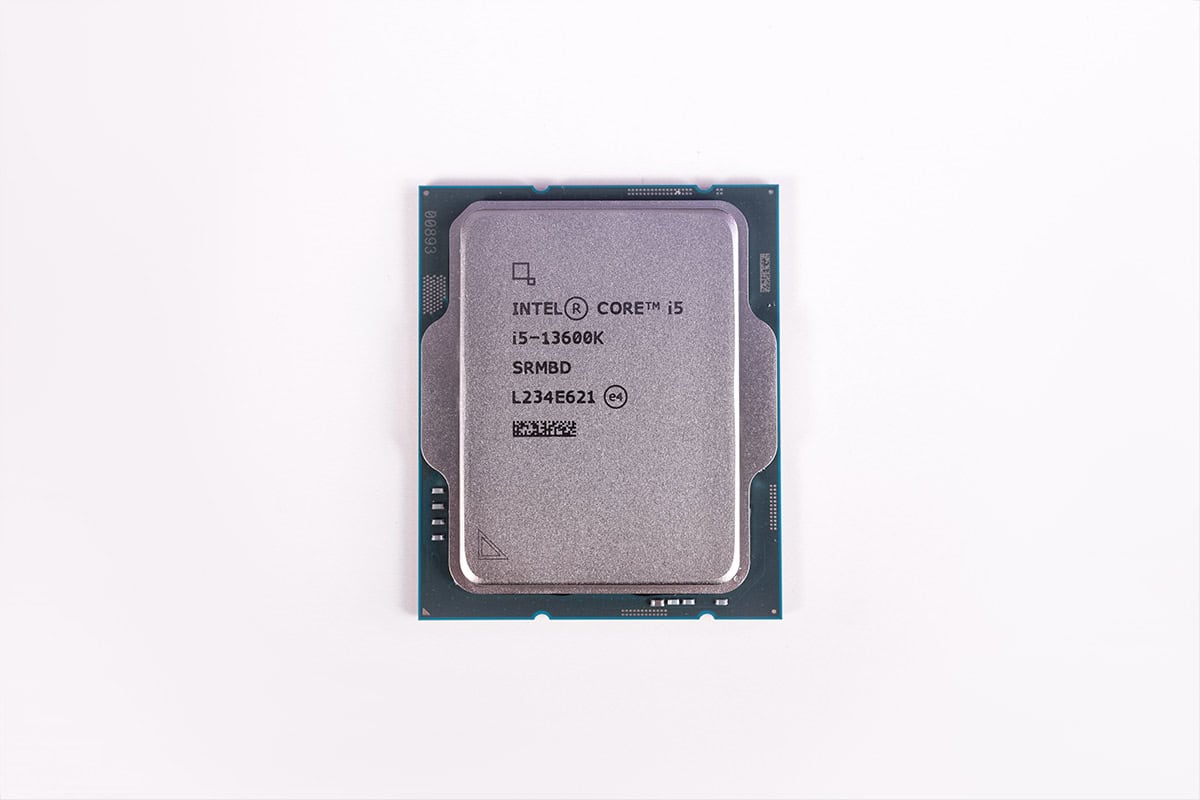
Cores
14 (6P-8E)
Threads
20
Boost speed
P-Core 5.1GHz / E-Core 3.5GHz
Base speed
P-Core 3.5GHz / E-Core 2.6GHz
L3 Cache
24MB
TDP
181W
Platform
Intel (LGA 1700)
As we discussed, the Intel Core i5 13600K is pretty similar in terms of single-core performance. That CPU belongs to socket LGA 1700, which has been around for a generation already, so there’s a better chance of finding these lying around for a better price. And the multi-core scores are significantly better considering the 8 extra cores and 8 extra threads.
Is AM5 future-proof?
As much as possible. Considering AM5 is the latest socket from AMD, and the fact that AMD has a solid track record for supporting its technology, it’s a pretty safe bet that AM5 will be supported for many years to come.

If you take a look at AM4, AM4 was in support for more than 6 years before AM5 was released, and that’s not to say that the support has ended either. AMD released an AM4 processor in 2025, the 5700X3D, showing that the love for AM4 is still alive and well. I do think that AM4 held back the progression of AMD slightly, allowing Intel to edge ahead in the CPU race. But it’s important to support your users.
I fully expect AM5 to be relevant for the next 4 years. Although I don’t want to see AMD held back again, they have the technology and have made significant advancements over the last few years, and I also want to see that momentum continue.
Conclusion
AM5 is a fantastic platform packed with fantastic CPUs, and the 7600X is no exception to that rule. If you want an affordable CPU in complex workstation benchmarks and can still push frames to the GPU when gaming, then this CPU is the best entry-level choice for you.
Yes AM5 as a platform and DDR5 are still a little costly, but with AMD ensuring support for the foreseeable future, it could be the investment you need to keep your PC as future-proof as you can. After all, you can always upgrade your CPU down the line. Swapping out a motherboard is far more frustrating.

